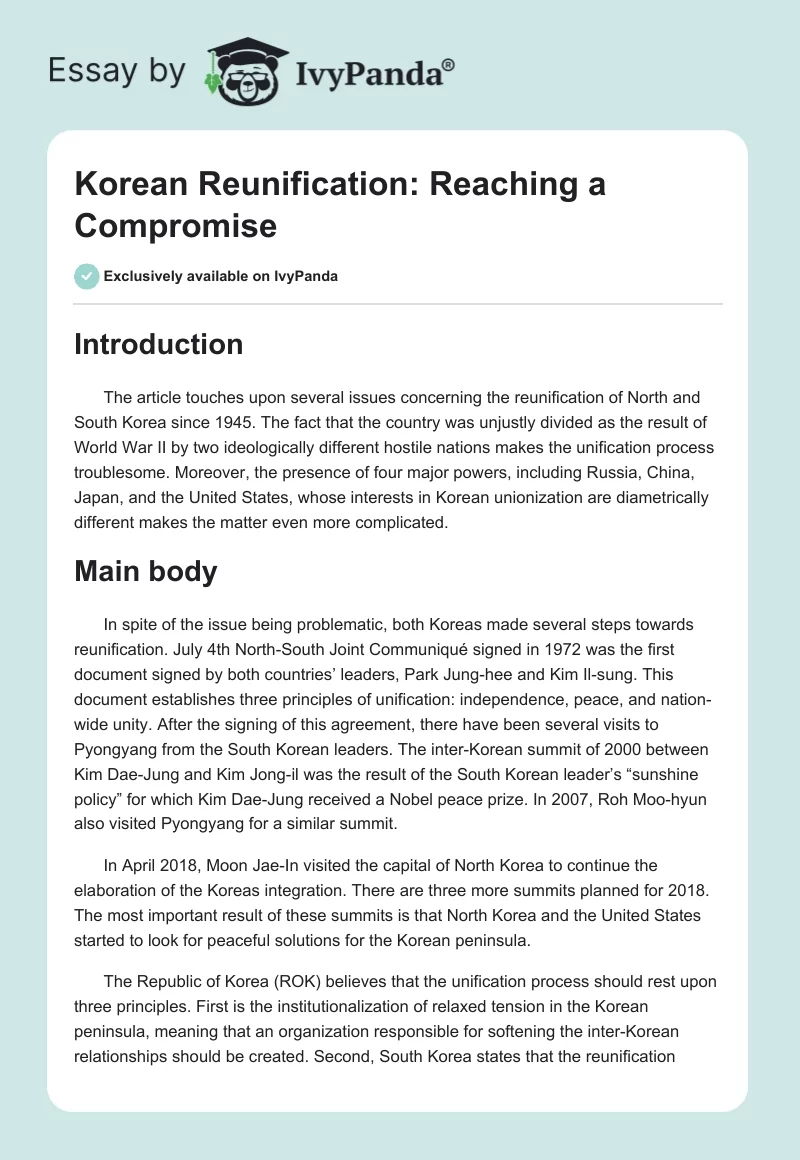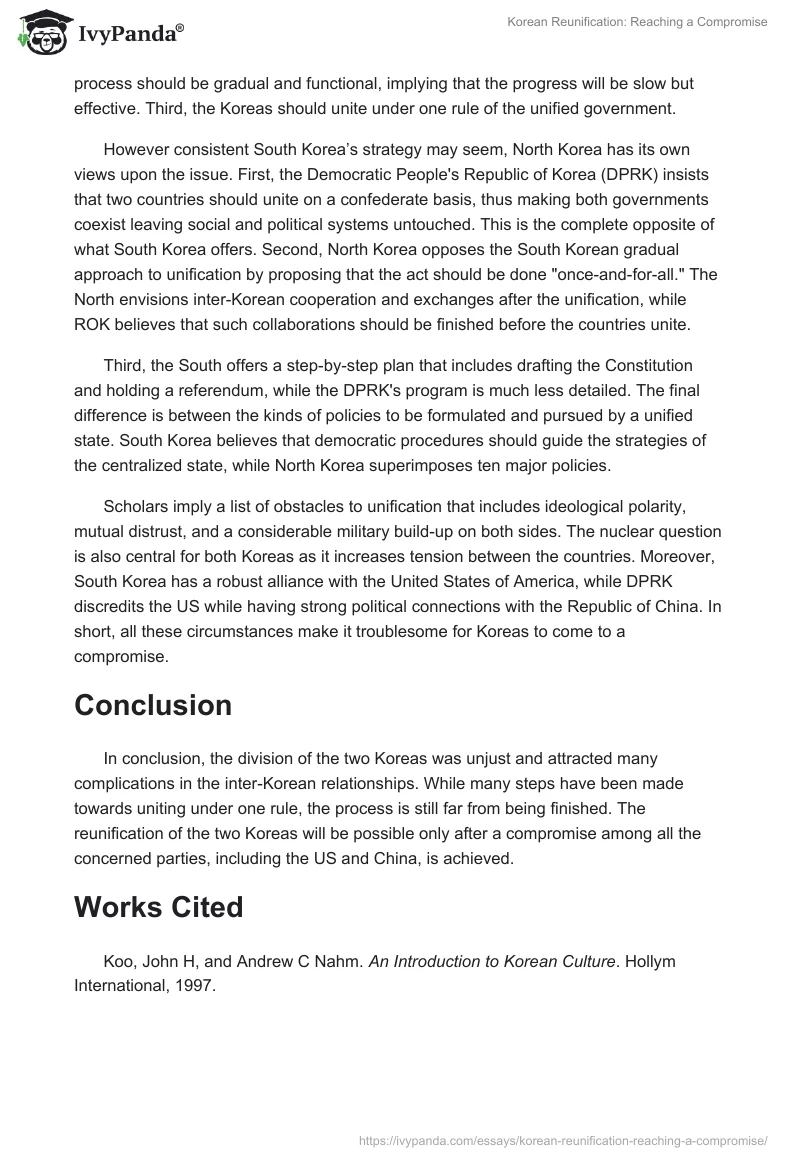Introduction
The article touches upon several issues concerning the reunification of North and South Korea since 1945. The fact that the country was unjustly divided as the result of World War II by two ideologically different hostile nations makes the unification process troublesome. Moreover, the presence of four major powers, including Russia, China, Japan, and the United States, whose interests in Korean unionization are diametrically different makes the matter even more complicated.
Main body
In spite of the issue being problematic, both Koreas made several steps towards reunification. July 4th North-South Joint Communiqué signed in 1972 was the first document signed by both countries’ leaders, Park Jung-hee and Kim Il-sung. This document establishes three principles of unification: independence, peace, and nation-wide unity. After the signing of this agreement, there have been several visits to Pyongyang from the South Korean leaders. The inter-Korean summit of 2000 between Kim Dae-Jung and Kim Jong-il was the result of the South Korean leader’s “sunshine policy” for which Kim Dae-Jung received a Nobel peace prize. In 2007, Roh Moo-hyun also visited Pyongyang for a similar summit.
In April 2018, Moon Jae-In visited the capital of North Korea to continue the elaboration of the Koreas integration. There are three more summits planned for 2018. The most important result of these summits is that North Korea and the United States started to look for peaceful solutions for the Korean peninsula.
The Republic of Korea (ROK) believes that the unification process should rest upon three principles. First is the institutionalization of relaxed tension in the Korean peninsula, meaning that an organization responsible for softening the inter-Korean relationships should be created. Second, South Korea states that the reunification process should be gradual and functional, implying that the progress will be slow but effective. Third, the Koreas should unite under one rule of the unified government.
However consistent South Korea’s strategy may seem, North Korea has its own views upon the issue. First, the Democratic People’s Republic of Korea (DPRK) insists that two countries should unite on a confederate basis, thus making both governments coexist leaving social and political systems untouched. This is the complete opposite of what South Korea offers. Second, North Korea opposes the South Korean gradual approach to unification by proposing that the act should be done “once-and-for-all.” The North envisions inter-Korean cooperation and exchanges after the unification, while ROK believes that such collaborations should be finished before the countries unite.
Third, the South offers a step-by-step plan that includes drafting the Constitution and holding a referendum, while the DPRK’s program is much less detailed. The final difference is between the kinds of policies to be formulated and pursued by a unified state. South Korea believes that democratic procedures should guide the strategies of the centralized state, while North Korea superimposes ten major policies.
Scholars imply a list of obstacles to unification that includes ideological polarity, mutual distrust, and a considerable military build-up on both sides. The nuclear question is also central for both Koreas as it increases tension between the countries. Moreover, South Korea has a robust alliance with the United States of America, while DPRK discredits the US while having strong political connections with the Republic of China. In short, all these circumstances make it troublesome for Koreas to come to a compromise.
Conclusion
In conclusion, the division of the two Koreas was unjust and attracted many complications in the inter-Korean relationships. While many steps have been made towards uniting under one rule, the process is still far from being finished. The reunification of the two Koreas will be possible only after a compromise among all the concerned parties, including the US and China, is achieved.
Works Cited
Koo, John H, and Andrew C Nahm. An Introduction to Korean Culture. Hollym International, 1997.


